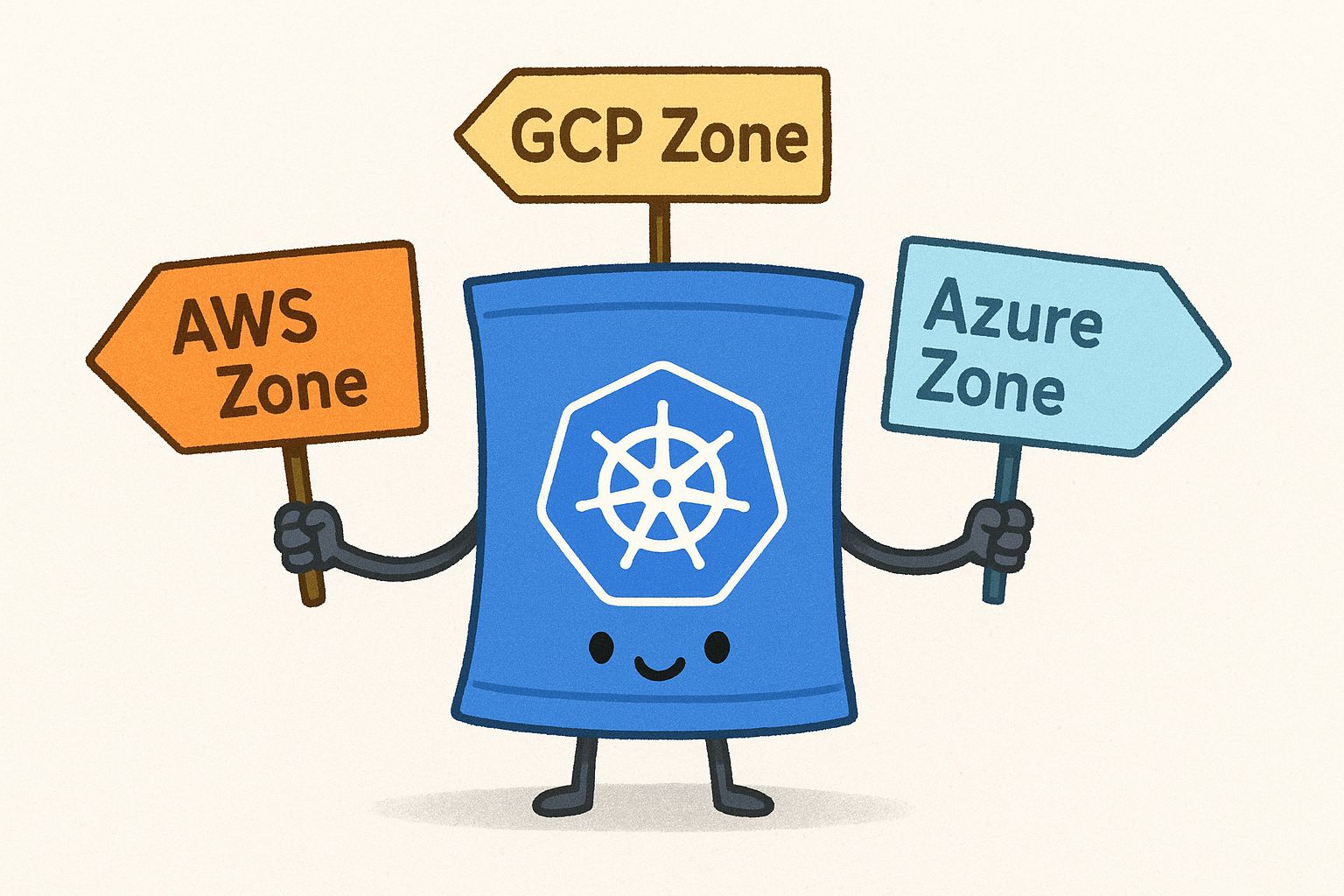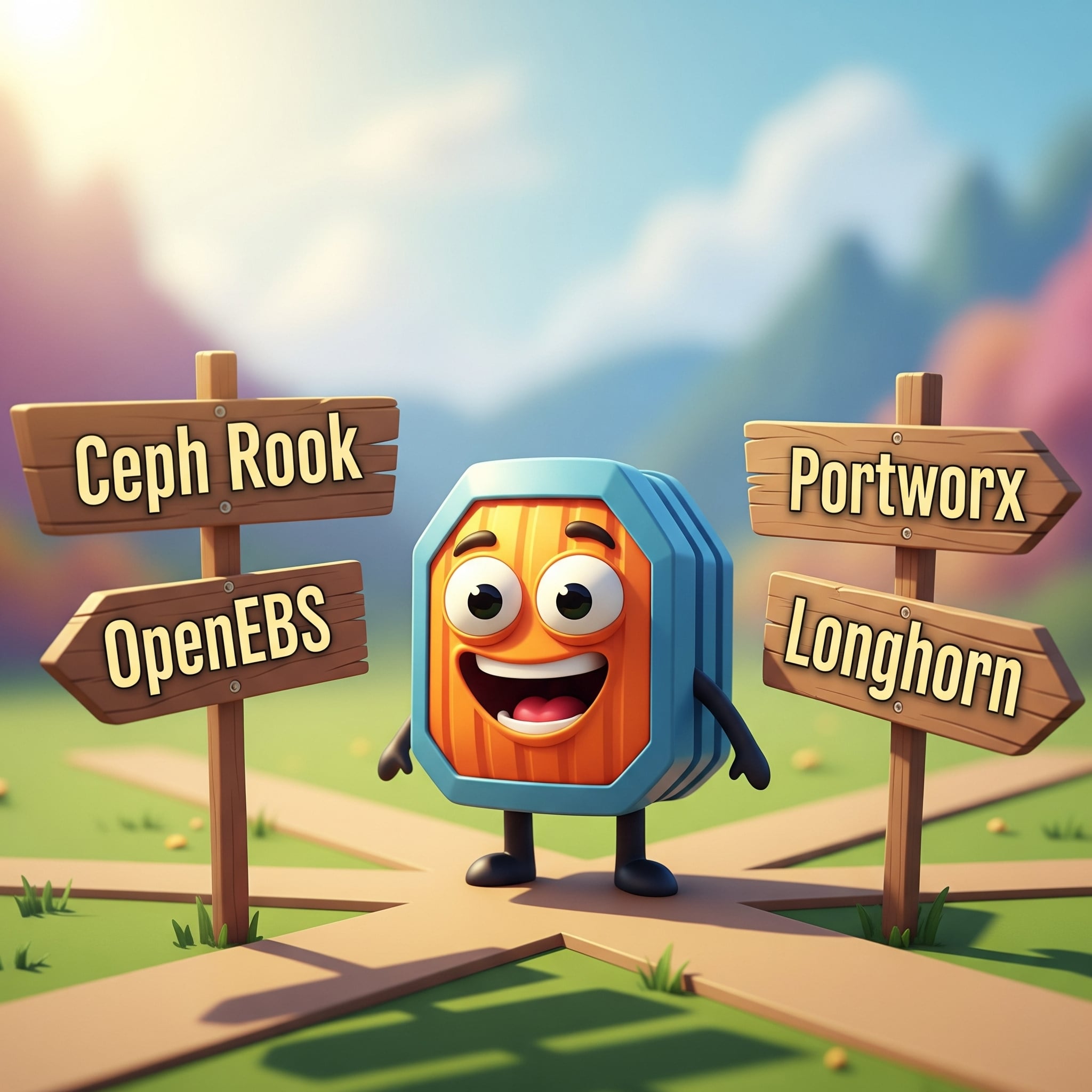Taming Multi-Cloud Kubernetes Networking with Topology Aware Routing
Behrouz Hassanbeygi
Aug. 11, 2025
/
In our last post, we saw how Rancher RKE2 beats vanilla Kubernetes on speed, security, and simplicity for most teams. The conclusion was clear: for getting to production fast, Rancher’s integrated toolkit is a massive accelerator.
But that raises the next logical question: Why not just use the "easy button" and go with a managed Kubernetes service like Amazon EKS, Google GKE, or Azure AKS? The cloud providers promise to handle the complexity for you. So, how does a self-hosted platform like Rancher stack up against the cloud giants?
Let's find out. We're comparing the Rancher Manager + RKE2 experience against the "big three" managed Kubernetes offerings.
This isn't just about features; it's a fundamental difference in philosophy.
Managed Kubernetes (AKS, EKS, GKE) sells convenience. The cloud provider manages the entire control plane (the brains of your cluster) as a black-box service. You don't worry about etcd backups, API server high availability, or control plane patches. Your job is to manage your applications and the worker nodes they run on. It’s a fantastic model if you live entirely within one cloud ecosystem.
Rancher Manager + RKE2 sells control and consistency. You run the management plane and the clusters on your own infrastructure—whether that's on-premises, in a single cloud, or across multiple clouds. Rancher gives you the UI, automation, and tooling to make this easy, but you are ultimately responsible for the underlying servers. This is your go-to for flexibility and a single pane of glass to rule them all.
We compared the two approaches across the criteria that matter most to engineering and platform teams.
Managed services are, by design, opinionated. You get the Kubernetes version, CNI (networking), and CSI (storage) that the cloud provider supports. Need a specific CNI plugin for performance or security reasons? You're often out of luck. This simplicity comes at the cost of flexibility.
Rancher, on the other hand, gives you full control. You can run it on bare metal, vSphere, or any IaaS provider. You choose the networking and storage drivers that fit your workload. With RKE2, you get a secure, conformant Kubernetes distribution that you can deploy anywhere, giving you ultimate architectural freedom.
Winner: Rancher, for teams that need control over their stack or run in hybrid environments.
With AKS, EKS, and GKE, you pay a constant management fee for the control plane (e.g., ~$0.10 per cluster per hour) on top of the cost for your worker nodes, load balancers, and storage. This is predictable but can add up, and you're paying for their infrastructure and their markup.
With Rancher, the software is open-source and free. You pay only for the infrastructure you run it on and the engineering time to manage it. If you have existing hardware or can secure cheap VMs, Rancher can be significantly more cost-effective. For enterprise needs, you can opt for a SUSE Rancher Prime subscription to get support, which can still be cheaper at scale than the cloud management fees.
Winner: It's a tie. Managed services are simpler to budget for, but Rancher can be cheaper if you have the skills and infrastructure.
This is where Rancher truly shines. It was built from the ground up to be a single control plane for a fleet of Kubernetes clusters, no matter where they are. You can use Rancher to provision clusters on-prem and in the cloud, and—critically—you can also import and manage existing EKS, AKS, and GKE clusters.
This gives you one dashboard for:
Trying to do this with cloud-native tools is a nightmare of context switching between different UIs, IAM roles, and CLI tools.
Winner: Rancher, by a landslide. It's the undisputed champion for multi-cluster and multi-cloud operations.
What if the choice wasn't "Rancher or EKS"? What if you could have the convenience of a managed control plane and the unified power of Rancher?
You can. This is one of Rancher's most powerful, game-changing features.
Rancher Manager can directly provision and configure managed Kubernetes clusters in AWS, Azure, and Google Cloud. You simply provide Rancher with your cloud credentials, and you can create, upgrade, and scale EKS, AKS, and GKE clusters—including their node pools—without ever leaving the Rancher dashboard.
Here’s why this is so powerful:
This model gives you the ultimate hybrid-cloud solution: leverage the cloud provider's managed control plane to reduce operational burden, while using Rancher to provide a consistent, secure, and unified management layer over your entire Kubernetes estate.
Here’s how Rancher Manager + RKE2 stacks up against the cloud providers' managed offerings.
| Feature | Rancher Manager + RKE2 | Managed Services (AKS, EKS, GKE) - Standalone |
|---|---|---|
| Control Plane Management | ✅ Full Control (You manage infra) | 🐢 Provider Managed (Black box, limited options) |
| Best For | Hybrid, Multi-Cloud, On-Prem, Edge | Single Cloud Environments |
| Flexibility | 🛠️ Very High (Choose your own OS, CNI, CSI) | 🔒 Low (Locked into provider's choices) |
| Multi-Cloud Management | 🌍 Best-in-Class (Single UI for all clusters, including managed) | 🧩 Fragmented (Requires separate tools per cloud) |
| Day-2 Tooling | 🐮 Integrated (Monitoring, logging, GitOps, etc. included) | 🔌 DIY (Requires integrating multiple cloud services or 3rd-party tools) |
| Vendor Lock-in | 🔽 Low (Run K8s anywhere, migrate easily) | 🔼 High (Deeply tied to the cloud provider's ecosystem) |
| Operational Overhead | Medium (Rancher simplifies it, but you own the VMs) | Low (Cloud provider handles the K8s control plane) |
So, who wins the battle for your workloads? The answer is clearer now: it's less about choosing one over the other, and more about your management strategy.
Managed Kubernetes services are a fantastic starting point. But the need for a consistent, secure, and simple way to manage a diverse fleet of clusters is a challenge they don't solve on their own.
Rancher answers a more strategic question: "How do I build a single, unified Kubernetes platform for my entire organization?"
By allowing you to manage self-hosted RKE2 clusters alongside cloud-managed EKS and AKS clusters, Rancher provides a solution that embraces the best of both worlds. It trades the siloed convenience of a single cloud for powerful, universal control. For any enterprise operating at scale, it's a strategic advantage that is hard to ignore. 🏁
Address
Level 8
11-17 York Street
Sydney NSW 2000
Phone Number
+61 2 8294 8067
Email
[email protected]

By Behrouz Hassanbeygi

By Behrouz Hassanbeygi
© 2017-2026 Darumatic Pty Ltd. All Rights Reserved.